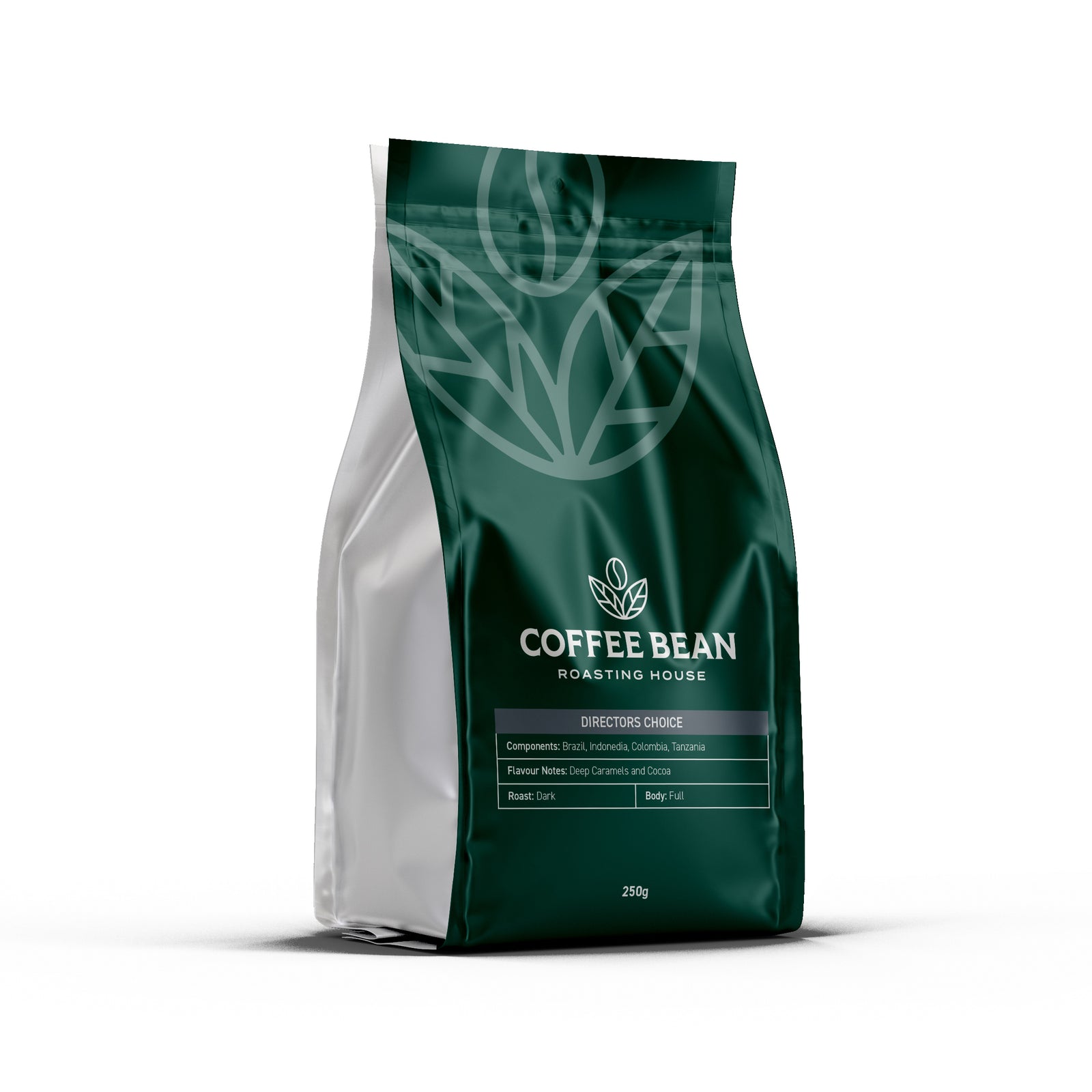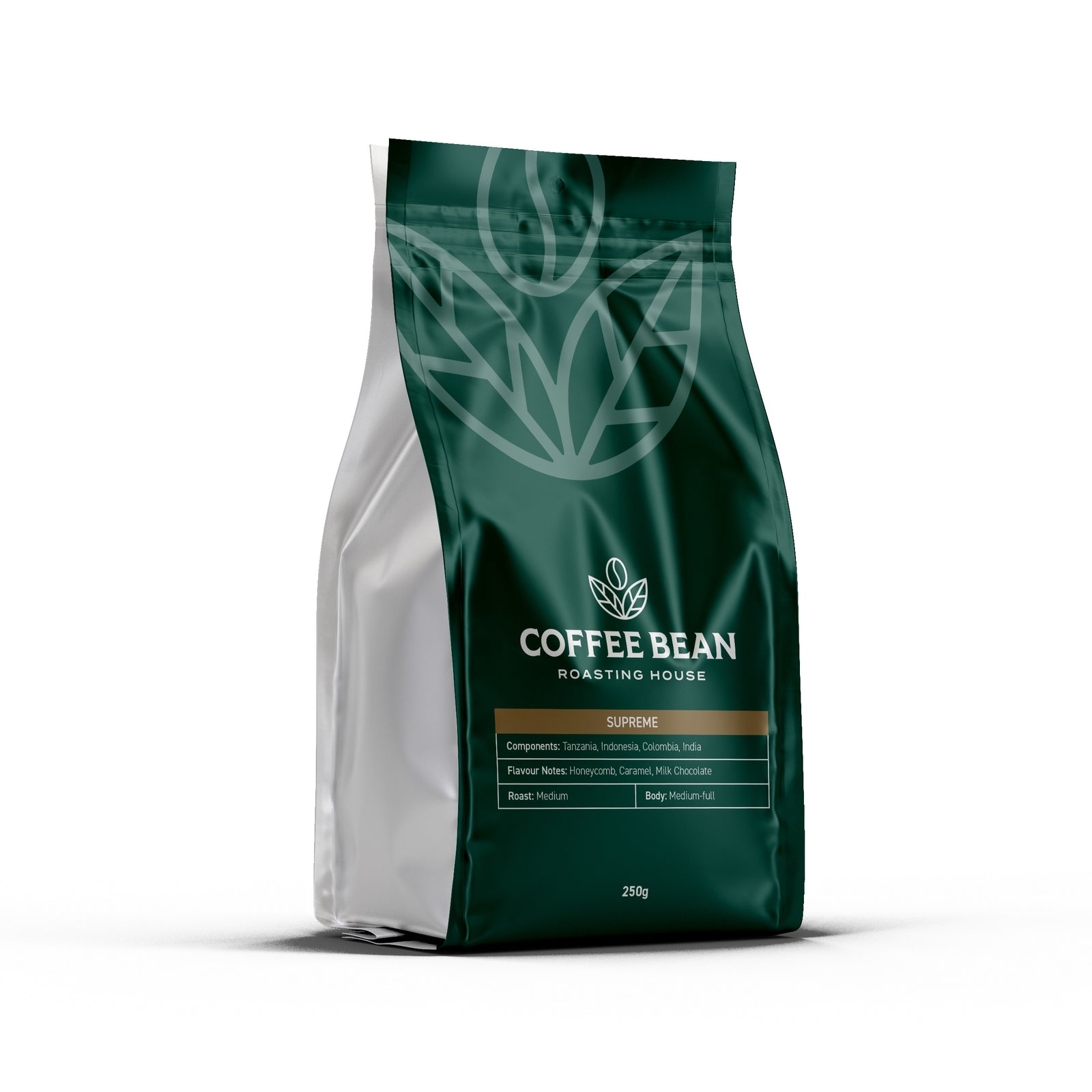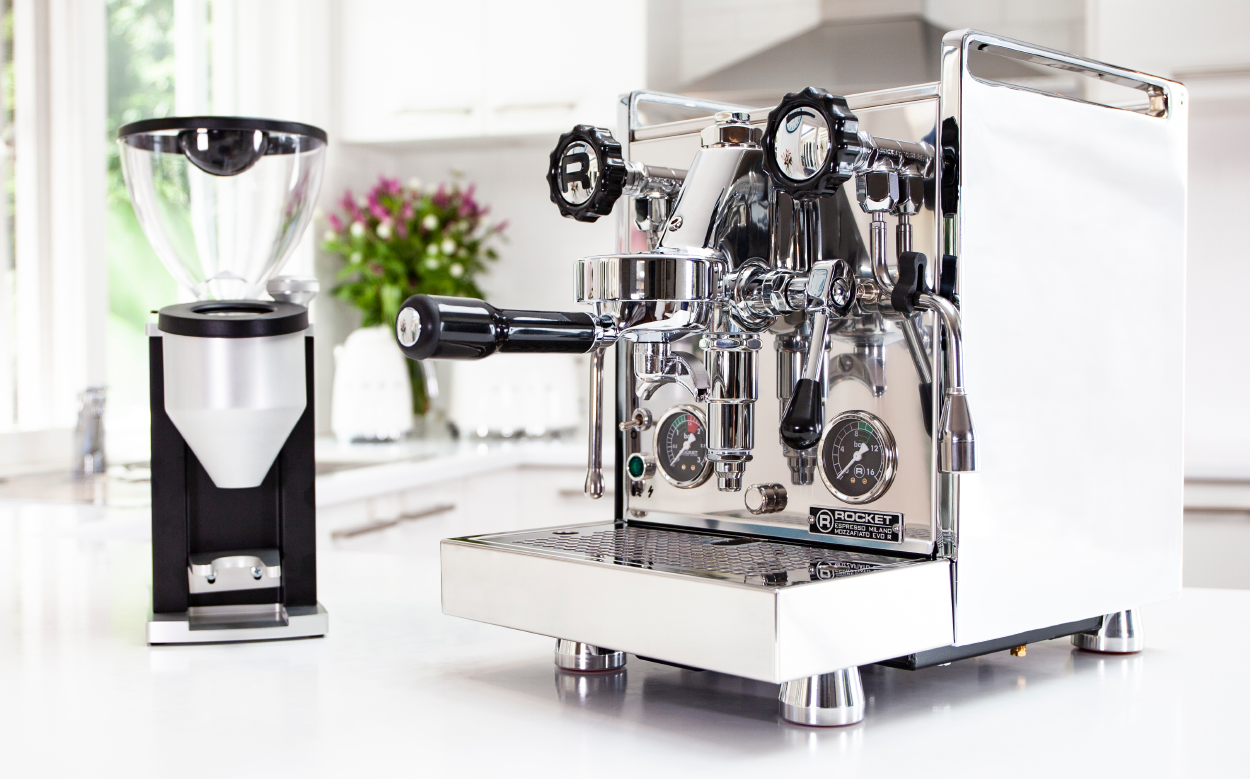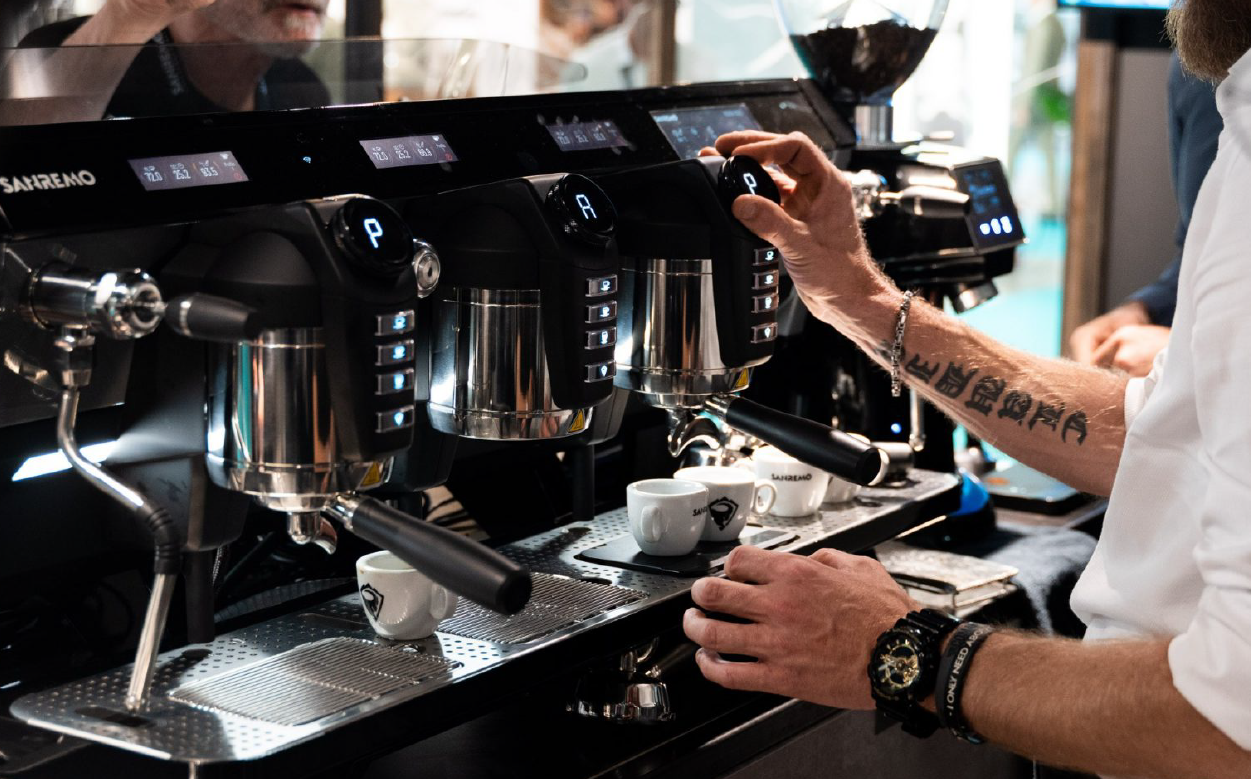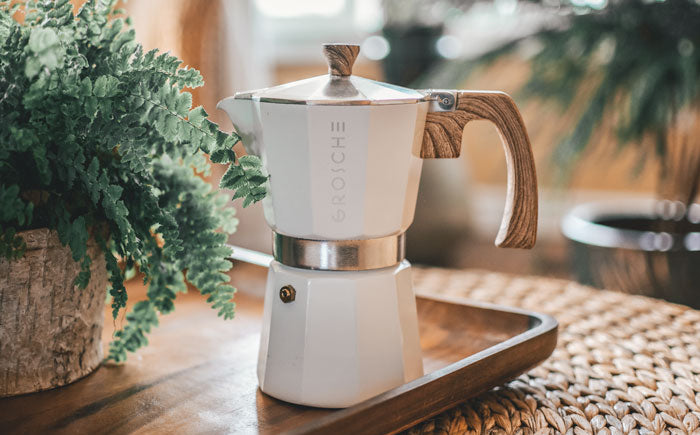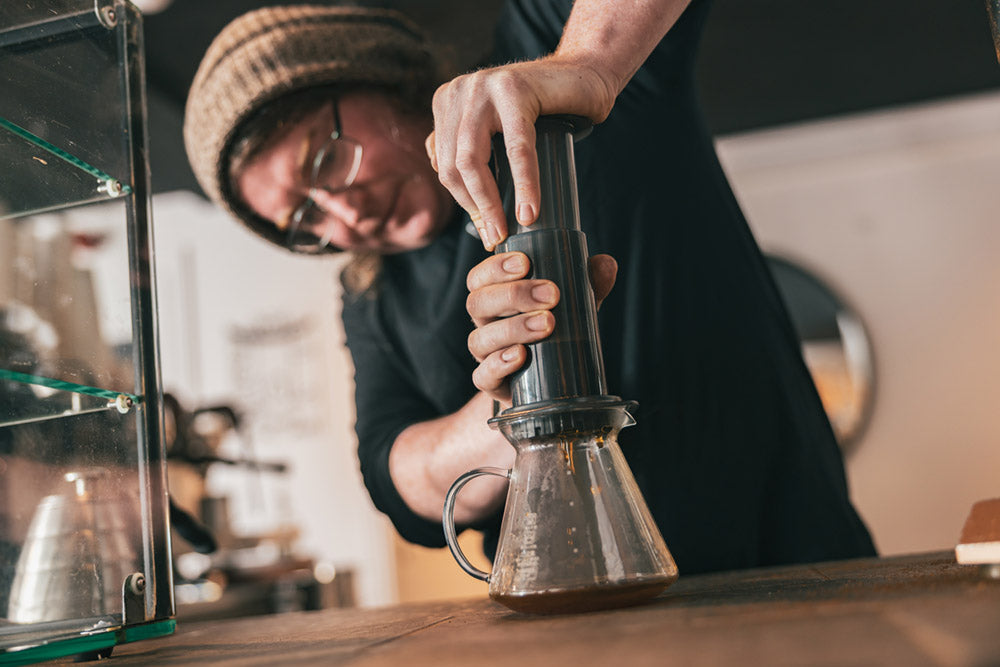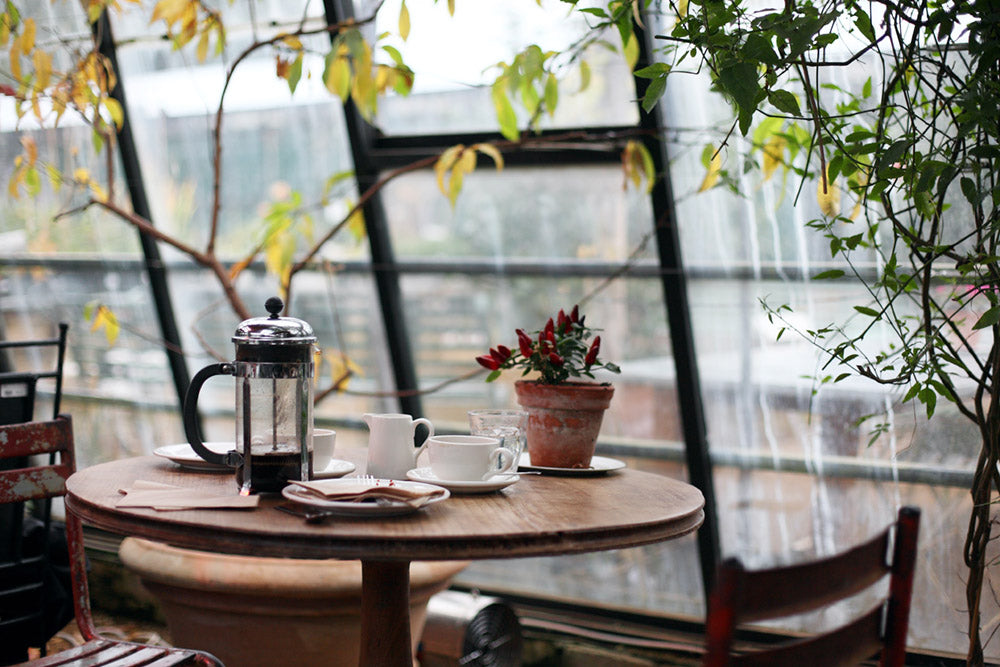It’s high-risk and high reward for espresso. A quality domestic machine will cost a couple of thousand dollars (personally, we think the Rocket and Sanremo home machines offer the best quality and value), but that investment is essential if you prefer the highest quality, texture and strength.
You’ve probably seen your favourite barista weighing fresh coffee applying pound-perfect pressure and pulling the shot at just the right moment to get the best possible flavour – all essential to achieving the right flavour and not spoiling the shot.
Master the home espresso and the days of queuing up at the café for your morning cup could be behind you.
Time required: 5 minutes.
Flavour: Rich, varies depending on bean and blend.
What you’ll need:
- Quality domestic Espresso machine,
- portafilter,
- tamp,
- digital scale,
- timer
- Coffee beans (grind finely),
- and grinder.
Difficulty: Difficult. You don’t have to be a world-renowned barista, but it does take some practice.
So how do I make great espresso at home?
The only real way to get better is to practice, taste and be honest with yourself. The espresso itself, and the quality of its flavour is the single most important part to having a great espresso drink at home. We call this the ‘base’. The espresso shot is the base to the rest of our drink and without a good base, everything afterward will fall over.
Great espresso should be complex, sweet, balanced and clean. But most of all, it should be easy to repeat!
Recipe
1:2 Coffee: Yield (espresso). That is, for what you put in, you should get double out.
Different beans are slightly different for the dose and yield. For this recipe, we’re using 20g of ground coffee.
- Double basket
- Dose (in): 20g of your favourite Coffee Bean coffee, grind for espresso
- Yield (out): 40g of espresso
- Time: 27-30sec
Quick Tip - get to know your equipment. How much coffee, in grams, does your basket hold? Most domestic coffee machines have much smaller basket sizes. You may have a 20g basket, or 13g basket or something else. The machines we sell are commercial grade and use commercial components and will usually have 13, 18, 21g baskets included. The recipe is scalable. E.g. If you have a 13g basket, aim for 26g of espresso in 20sec
Domestic Espresso Machine Brewing Method
- Get your equipment ready
- Heat up your espresso machine and run some water through the group head. This will help heat the inside of the group head.
- Add fresh coffee to your grinder.
- Wipe your portafilter clean and dry with a tea towel. Water follows the path of least resistance. A wet basket will create channelling, which will result in an unbalanced and under extracted espresso.
- Grind your beans
- Weigh your dose. To standardise your espresso, use the same recipe. Weighing your dose allows you to know what adjustments you need to make to get consistent espresso pours. Weighing is important and will show you where you may have gone wrong or need adjustment. Get yourself some good scales and weigh in/out.
- Distribute your coffee evenly across the basket. Use your hand to tap the sides of the portafilter to even out the grinds and a sweeping motion with your finger to level the grinds on top. Even distribution is important so the water can travel through and extract evenly.
- Using a tamp, press firmly and evenly on top of the grinds to create resistance. Ensure an even tamp to prevent channelling or uneven extraction.
- Flush through a few seconds of water. If you have a heat exchange machine, flush water through immediately before your shot. Once it stops ‘hissing and spitting’ and runs steady, you’re at the right temperature to brew.
 10. Get your timer ready
10. Get your timer ready
11. Place your portafilter into the group head of the espresso machine
12. As soon as the portafilter is locked in, start the extraction, and start your timer. Leaving the coffee in the group head without starting the extraction will start to burn the coffee.
13. The extraction will begin, and brewed coffee will make its way into your cup.
14. Watch your extraction.
15. The pour should start with dripping before producing a steadier stream. Espresso should be flowing through each spout evenly. You’re looking for a dark brown espresso pour to begin with, that then tans before becoming lighter in colour and in texture, until it eventually becomes almost blonde in appearance and watery in texture. This is indicative of where your extraction should finish.
16. Stop the extraction and timer.
17. Weigh the finished espresso. Ideally, the pour should have taken around 30seconds, produced roughly 60ml (including crema) from 20g of coffee and the finished weight around 40g.
18. Your tasty Espresso is ready to enjoy as is, ready to add hot or cold milk or water for your favourite café style drink!
Ready for the next one?
If that last cup was perfect, use the same recipe you did before.
If it was a little off – maybe poured for too long or too quickly, adjust your grind a bit finer to slow the pour or courser to produce a faster pour.
Empty your portafilter, flush the group head, wipe out the inside of the portafilter with a clean, dry tea towel and you’re ready to start back at step 1!


